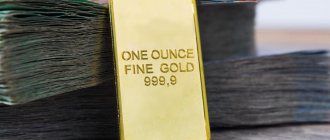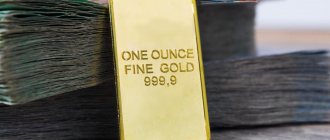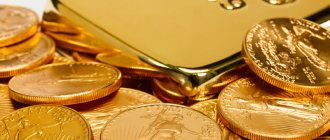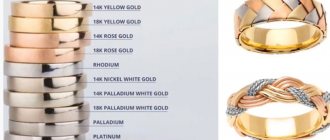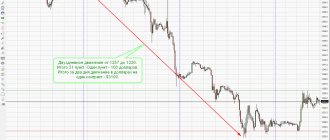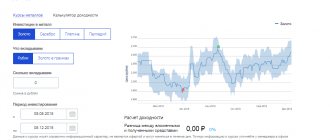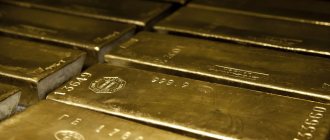How and why gold is becoming more expensive
On July 23, during trading on the Singapore Precious Metals and Gold Exchange (SGPMX), the cost of an ounce of gold reached $1,892.3, SGPMX representative in Russia and Austria Olga Raikes told Secret.
Thus, this precious metal has updated the value record of 2011, she noted. On other sites, the price also approached its historical maximum. In total, since the beginning of 2021, gold has already risen in price by more than 20%.
Gold is a protective asset that traditionally rises in price during crises. This time, the growth in value was influenced by the fact that central banks of different countries are trying to stimulate the economy: they lower rates, and also turn on the “printing press” and increase the amount of money in circulation. Treasury yields have fallen as investors look for alternatives. And they find it in gold, analysts explain.
“The issue of funds can lead to the depreciation of the dollar, which ensures inflows into gold,” Denis Ikonnikov, portfolio manager of the investment company QBF, told The Secret. “Political instability due to the escalation of the conflict between the United States and China also contributes to the popularity of gold.”
New winds are blowing on the global gold market
The World Gold Council (WGC) recently published a report on the state of the global precious metal market for the third quarter of 2020.
Of the ongoing trends, the most important was the continued rise in prices for the precious metal. The average gold price in the 1st quarter was slightly higher than $1,580 per troy ounce. In the second quarter, it rose 8 percent to $1,710. In the third quarter, the average price increased by another 16 percent compared to the second and by 32 percent compared to the beginning of the year. In early August, the price broke through the $2,000 level and at one point reached a record high of $2,060. True, in September there was a price pullback (to an average monthly value of approximately $1,950), but such pullbacks are common for the gold market. Experts expect that at the beginning of 2021 the price will firmly settle at a level above the $2,000 level.
The reasons for the rise in gold prices are obvious - the weakening of the dollar and other leading currencies (euro, British pound, Japanese yen) and their expected collapse. The dynamics of prices for the precious metal does not indicate that gold is becoming more expensive, but that currencies are depreciating.
The paradox of the gold market in 2021 is that the rise in prices for the precious metal occurs against the backdrop of a fall in demand for it. Thus, in the second quarter, demand fell by 11% compared to the first and amounted to 1015.7 tons. In the third quarter, it dropped below the 1,000-ton level – to 892.3 tons. This is down 12.1% from the previous quarter and down 19% year over year. Supply of the precious metal was 1,224 tonnes in the third quarter, down 3% year-on-year compared with a 15% decline in the second quarter. Thus, the situation with demand in the gold market worsened, and supply began to gradually recover. Supply in the second quarter dropped significantly due to the fact that, under the influence of the coronavirus factor, the production of the precious metal was limited or even stopped (for example, there was a complete stop in production in South Africa). And yet the question arises: for what reason did gold prices rise in the third quarter, despite the fact that the supply of the metal exceeded demand by 332 tons?
It is believed that this year there has been a rapid change in the structure of demand for gold. In the previous few years, central banks were active buyers of gold. But in the third quarter of 2020, they unexpectedly became net sellers of the precious metal (total sales exceeded total purchases). Central banks have become net sellers of gold for the first time in ten years. This phenomenon can be explained by the fact that in the context of the virus-economic crisis, many countries urgently needed currency to pay off certain urgent obligations. The largest sellers in the 3rd quarter were the central banks of Turkey (22 tons) and Kazakhstan (35 tons).
In the third quarter (as well as in the second), the Bank of Russia did not buy gold. The Bank of Russia announced in March that it would stop purchasing precious metal from April 1, which is strange. After all, unlike most other central banks, it does not need to spend foreign currency to replenish gold reserves, since a large amount of gold is mined in Russia and purchased for rubles. And what’s even stranger: in the third quarter, the Bank of Russia sold 1.2 tons of its reserves on the world market. The last time before this, the Central Bank of Russia sold gold in the 1st quarter of 2007 (also 1.2 tons). The Bank of Russia has foreign exchange reserves of more than $440 billion. We need to get rid of them, and not convert rising gold into a depreciating currency.
Traditionally, the bulk of demand (more than half) in the global gold market came from the jewelry industry. The virus-economic crisis has made serious adjustments to this. In the third quarter of 2021, jewelry demand took the hardest hit of any other segment of the gold market, falling to 333 tonnes, representing only 37.3% of total demand for the precious metal. The year-on-year decline in demand for jewelry gold was 29%. In countries such as China and India, where the jewelry market is especially developed, the low season has begun.
How can we explain this drop? Firstly, it arose due to quarantine restrictions. Selling jewelry online is problematic. Secondly, jewelry industry products cannot be considered as an effective tool for saving (hoarding). They have low liquidity (the sale price may be significantly lower than the purchase price). And in the context of a growing crisis and depreciation of currencies, saving savings comes to the fore for citizens.
Some of the demand for gold is traditionally created by industries outside of jewelry production. Due to quarantine restrictions, the demand for such industrial gold also fell: in the second quarter of 2021 by 16%, in the third by another 6%, amounting to only 76.7 tons at the end of the third quarter.
The fall in overall demand for gold would have been even greater if it had not been offset by the growing demand for the so-called. investment gold. What it is? Precious metal in the form of standard bars or standard coins. In a broader sense, gold investments include securities backed by the precious metal. The most widespread today are specialized exchange-traded index funds (Exchange Traded Funds - ETFs) linked to gold (gold exchange-traded funds).
So, against the backdrop of falling demand for gold from the jewelry and other industries, as well as central banks, there is a rapid increase in demand for investment gold. In the 3rd quarter of the year, investments in gold amounted to 494.6 tons, they increased by 21% on an annual basis, i.e. compared to the 3rd quarter of 2021 (Table 1). As experts note, the rapidly growing investment gold market has led to rising prices in all sectors of the world precious metal market.
In the first half of the year, gold exchange-traded funds demonstrated high dynamics. The demand for certificates of these funds from individuals and legal entities was transformed into an increase in the funds’ demand for gold. Today there are several dozen ETFs in the world that specialize in investing in precious metals. These are funds operating in the USA, Great Britain, Germany, and Switzerland. The largest funds in the United States are (in brackets - the value of gold reserves at the beginning of May 2021, tons): SPDR Gold Shares (1056.2); iShares Gold Trust (422.1); Sprott Physical Gold Trust (64.4); SPDR Gold MiniShares Trust (37.5); Aberdeen Standard Physical Gold Shares (32.9). In the UK: iShares Physical Gold ETC (202.4); Invesco Physical Gold ETC (198.6); WisdomTree Physical Gold (146.7); Gold Bullion Securities Ltd (84.0); WisdomTree Physical Swiss Gold (54.2); BullionVault (41.9). In Germany: Xtrackers Physical Gold ETC EUR (64.7); Xtrackers Physical Gold Euro Hedged ETC (59.2); Xtrackers Physical Gold ETC (24.5). The first of the named American funds has gold reserves comparable to the official gold reserves of Switzerland (1040 tons as of July of this year).
Over the entire past year, gold exchange-traded funds purchased 659 tons of gold. The total amount of gold in the ETF at the beginning of this year was 2,885 tons. In 2021, large-scale purchases of gold by funds continued. According to the results of the first quarter of the year, the gold reserves of the funds increased by 298 tons and reached 3183 tons. In the second quarter, the increase was even more impressive - by 436 tons. According to VSZ, as of the middle of this year, the reserves of gold exchange-traded funds amounted to 3 thousand 620 tons (in in value terms 205.8 billion dollars). This is more than the official gold reserves of Germany (3,362 tons as of September this year), which ranks second in the world in this indicator after the United States.
However, in the 3rd quarter, investment activity in gold exchange-traded funds began to disappear. In the three-month period from July to September, the funds purchased 272.5 tons of gold (which is less than the increase in the 1st quarter and, even more so, less than the increase in the 2nd quarter). On an annual basis, the increase was only 5% (Table 1). Purchases of gold by funds were especially sluggish in September - only 36 tons.
Table 1.
Investments in gold in the 3rd quarter of 2021 in the world (tons)
| 3rd quarter 2021 | 3rd quarter 2021 | Growth over the year, % | |
| Investments in gold, total | 408,1 | 494,6 | 21 |
| Investments in physical gold (bars and coins) | 149,4 | 222,1 | 49 |
| Investing in Gold ETFs | 258,7 | 272,5 | 5 |
Source: gold.org
At the same time, a sharp rise in investment in physical gold – bars and coins – has been recorded. Citizens (and legal entities) trust banks and funds that offer clients impersonal gold less and less. There may be bankruptcies, there may be fraud. It is better to keep the precious metal under the mattress or bury it in the garden. As a last resort, buy a gold bar and place it in a safe deposit box.
At the end of the 3rd quarter, these investments amounted to 222.1 tons, which means an increase on an annual basis of 49%. The sharply increased interest in investment gold is explained by the desire of individuals and legal entities to insure against possible depreciation and, especially, a sharp collapse of the US dollar.
The World Gold Council provides a list of countries where the demand for investment gold in the form of physical metal in the 3rd quarter was the greatest (purchases in parentheses, tons): China (57.8); Türkiye (48.5); India (33.8); Germany (32.3); USA (19.2). All other countries accounted for 30.4 tons.
In some countries, there has been an explosive increase in demand for physical investment gold. Turkey has especially distinguished itself, where demand for such gold has increased on an annual basis by 600%. It is also worth noting the USA, where the growth on an annual basis was 300%. Today in America, even Wall Street banks recommend their clients to gradually move away from the dollar and convert it into precious metal.
Demand for physical gold also increased sharply in Germany (by 81% on an annual basis) and Austria (by 128%). But here are the increases on an annual basis for some other countries (%): India - 51; China – 35; UK – 28.
It is noteworthy that Russia is not in the list of top 10 countries with the largest investments in physical gold in the 3rd quarter. It does not exist for the reason that there is actually no market for such gold in the country. In recent years, purchases of investment gold in Russia have been at the level of only 3-4 tons per year. Such symbolic volumes of transactions with investment gold (just over 1 percent of the production of the precious metal in the country) are explained by the fact that Russia still maintains a value added tax (VAT) on transactions with investment gold. Moreover, as the World Health Organization notes, it is the highest in the world – 20%. In the European Union, such a tax was abolished at the beginning of the 21st century, in China - in 2004.
In addition, today most of the gold mined in Russia is sent to the foreign market, leaving crumbs for the domestic market. Based on the results of three quarters of 2021, 220.5 tons of precious metal were exported from the country (approximately 90% of the gold mined in Russia during this time). Almost all Russian gold is exported to England.
The abolition of VAT on investment gold and the reorientation of Russian gold miners from the external to the domestic market would allow Russian individuals and legal entities to carry out a profitable and life-saving conversion of US dollars and other currencies into physical metal. This is the simplest and most obvious way to effectively de-dollarize the Russian economy.
Photo: REUTERS/Leonhard Foeger
Is it worth buying gold now?
Experts interviewed by Sekret do not predict a subsequent rise in price for the asset. “As the crisis passes, a certain correction will most likely be observed,” said Alexander Shadrin, head of the management’s analytical service.
Buying gold now means making a mistake that will teach the rule “buy low, sell high,” says Anastasia Kosheleva, editor-in-chief of Investing.com Russia. “Try to choose a better moment to buy: after too active growth there is always a rebound downwards. This is what you should use to enter the metals market,” she says.
Olga Raikes believes that when investing for a long time, it is advisable to store no more than 10% of assets in gold.
